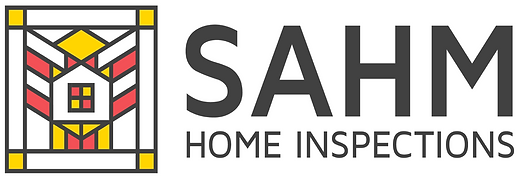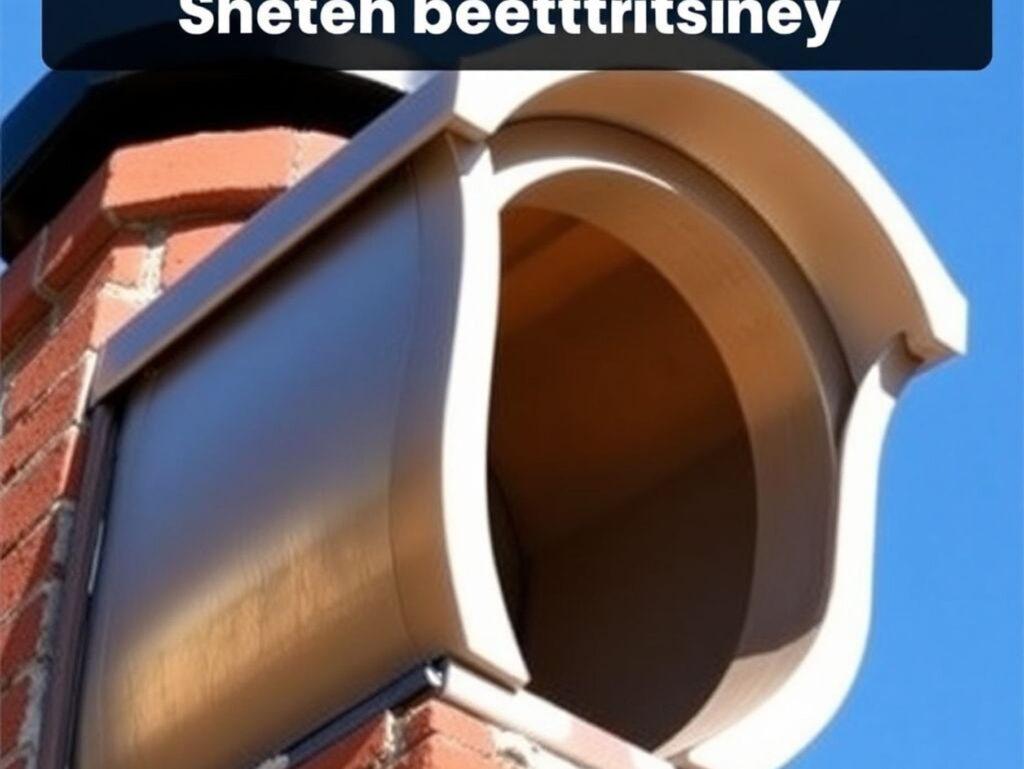When it comes to keeping your chimney flue in good shape, understanding what makes it work is super important. Your chimney is more than just a pipe; it’s a crucial part of your home that helps get rid of harmful gases. Regular chimney flue maintenance in Oak Park, IL, can keep your home safe and your fireplace running smoothly, so let’s break down what you need to know to keep things safe and efficient.
Key Takeaways
-
Regular maintenance prevents blockages and keeps your chimney safe.
-
Look out for signs like smoke smells and water damage to catch issues early.
-
A chimney cap is essential for protecting against water damage.
-
Professional cleaning is often the best way to ensure thorough maintenance.
-
Stay on top of local regulations to keep your chimney compliant and safe.
Understanding Chimney Flue Components

Okay, so you’ve got a chimney. But do you really know what’s going on inside? It’s not just a hole in your roof! Let’s break down the key parts of the flue system. It’s more than just bricks and mortar; it’s a carefully designed system to keep your home safe and warm. Think of it as the unsung hero of your fireplace.
Flue Liners and Their Importance
Flue liners are like the backbone of your chimney. They’re designed to protect the chimney structure from heat and corrosive byproducts of combustion. Without a good liner, those gases can eat away at the masonry, leading to some serious (and expensive) problems down the road. You’ve got different types of liners too – clay, metal, and cast-in-place are the most common. Each has its pros and cons, depending on your needs and budget.
Chimney Caps and Their Role
Think of a chimney cap as an umbrella for your chimney. It sits on top and keeps rain, snow, leaves, and animals out. Seriously, birds and squirrels love to build nests in chimneys! A good cap will prevent blockages and water damage, which can save you a lot of headaches. Plus, some caps have spark arrestors, which help prevent chimney fires by stopping embers from flying out.
Masonry vs. Metal Flues
Okay, so you’ve got two main types of flues: masonry and metal. Masonry flues are the traditional kind, built with bricks or concrete blocks. They’re durable, but they can crack over time. Metal flues, on the other hand, are usually made of stainless steel or aluminum. They’re lighter, easier to install, and often more resistant to corrosion. Choosing between the two depends on your fireplace, your budget, and your local building codes. Here’s a quick comparison:
|
Feature
|
Masonry Flue
|
Metal Flue
|
|---|---|---|
|
Material
|
Brick/Block
|
Steel/Alum
|
|
Durability
|
High
|
Medium
|
|
Installation
|
Complex
|
Easier
|
|
Cost
|
Higher
|
Lower
|
|
Corrosion Res.
|
Lower
|
Higher
|
Understanding these components is the first step in keeping your chimney in good shape. Regular inspections and maintenance are key to preventing problems and ensuring your fireplace is safe to use. Don’t wait until you have a chimney fire to start paying attention to your flue!
The Importance of Regular Maintenance
Okay, so you’ve got a chimney. Great! But it’s not a ‘set it and forget it’ kind of deal. Regular maintenance is super important, and I’m not just saying that. Think of it like your car – you wouldn’t skip oil changes, right? Same goes for your chimney. Let’s get into why you need to keep up with it.
Prevention of Blockages
Seriously, stuff gets in there. Animals, leaves, twigs… you name it. All that junk can block the flue, and that’s bad news. A blocked flue can cause smoke to back up into your house, which is a fire hazard and can also lead to carbon monoxide poisoning. Regular cleaning gets rid of all that debris, keeping things flowing smoothly. I had a bird’s nest in mine once, and it was a pain to get out. Trust me, you don’t want that.
Detection and Repair of Damage
Flue liners aren’t indestructible. They can crack, leak, or just plain wear out over time. Catching these problems early is key. A small crack now can turn into a major repair later, costing you a ton of money. Plus, damaged liners aren’t as effective at venting smoke and gases, which, again, is a safety issue. I check mine every spring after the heavy use of winter, just to be sure.
Compliance with Safety Standards
Yeah, there are rules about this stuff. Local codes often require regular inspections and maintenance to make sure your chimney is safe. Ignoring these rules can lead to fines or even make your homeowner’s insurance invalid. Nobody wants that. Keeping your chimney in good shape shows you’re taking safety seriously, and it keeps you on the right side of the law.
Think of regular chimney maintenance as an investment. It’s not just about keeping your fireplace working; it’s about protecting your home and family. A little bit of upkeep now can save you a lot of headaches (and money) down the road.
Signs That Your Flue Liner Requires Maintenance
Okay, so you’ve got a chimney. Great! But is your flue liner secretly plotting against you? Probably not, but it is important to keep an eye out for trouble. Ignoring these signs can lead to bigger, more expensive problems down the road. Here’s what to watch for:
Water Leakage or Damage
Water and chimneys don’t mix. If you see water stains on your ceiling near the chimney, or notice any dampness or crumbling bricks, that’s a major red flag. Water can get inside and wreak havoc, especially if you have a masonry chimney. It can freeze and expand, causing cracks. It’s like the chimney is slowly dissolving from the inside out. Not good.
Persistent Smell of Smoke
Is your house smelling like a campfire even when the fireplace isn’t lit? That’s a sign that smoke isn’t going where it should – up and out of the chimney. A damaged flue liner can allow smoke to seep into your home. This isn’t just annoying; it’s a potential health hazard. Carbon monoxide is no joke, so get this checked out ASAP.
White Residue on Liner Walls
Ever notice a white, chalky substance inside your fireplace or on the flue liner? That’s likely efflorescence, a mineral deposit left behind by moisture. It’s a sign that water is getting into your chimney and reacting with the brick or mortar. While a little bit might not be a huge deal, a lot of it means you’ve got a moisture problem that needs addressing. It can also be creosote, which is a fire hazard.
Ignoring these signs won’t make them go away. Small problems can quickly turn into big, expensive ones. Regular inspections and maintenance are key to keeping your chimney – and your home – safe and sound.
Common Chimney Problems and Hazards
Chimney Fires and Their Causes
Chimney fires are scary, and they happen more often than you might think. The main culprit is creosote, that nasty byproduct of burning wood. If you don’t clean your chimney regularly, creosote builds up, and it’s super flammable. Think of it like coating the inside of your chimney with gasoline – not good! Other causes can include burning the wrong types of wood (like wet or green wood) or having obstructions in the flue that cause the fire to burn hotter and less efficiently.
Impact of Creosote Buildup
Creosote isn’t just a fire hazard; it’s also corrosive. It can eat away at your flue liner, weakening the entire chimney structure. This can lead to expensive repairs down the road. Plus, creosote buildup restricts airflow, making your fireplace less efficient and potentially causing smoke to back up into your house. Nobody wants a smoky living room! There are three stages of creosote buildup, each more dangerous than the last. Stage one is easily removable, but stage three is a hardened glaze that’s very difficult to get rid of.
Obstructions and Their Risks
Obstructions in your chimney can be anything from bird nests and leaves to small animals that have gotten stuck. These blockages restrict airflow, which can cause carbon monoxide to build up in your home. Carbon monoxide is odorless and colorless, making it a silent killer. Obstructions can also cause smoke to back up into your house, and they can even contribute to chimney fires by trapping heat and flammable materials.
I had a friend who found a whole family of squirrels living in their chimney! It’s a good reminder to get your chimney inspected regularly, especially before and after the burning season. You never know what might be lurking up there.
Chimney Cleaning Techniques
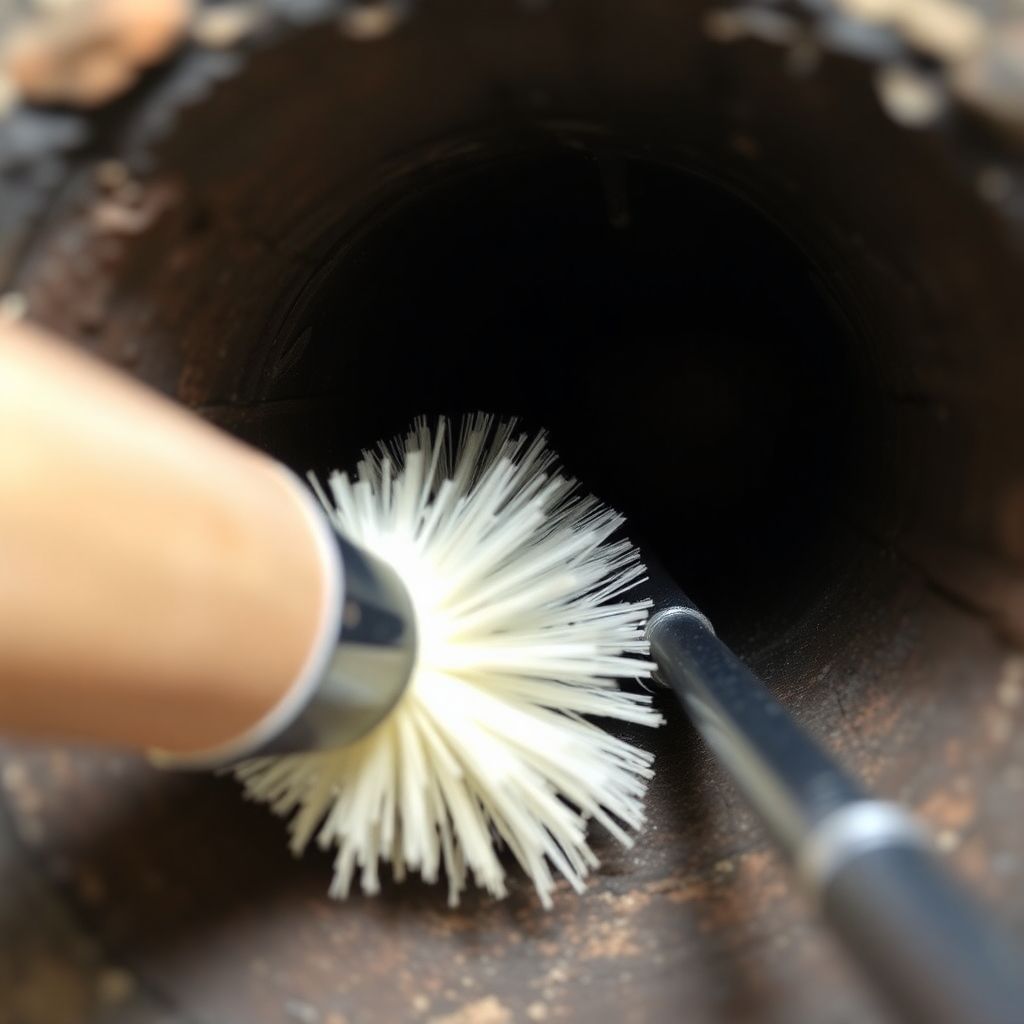
Frequency of Cleaning
Okay, so how often should you actually clean your chimney? It’s not a one-size-fits-all answer. It really depends on how often you use your fireplace and what kind of wood you’re burning. If you’re a regular fireplace user, burning wood several times a week during the colder months, you should probably get your chimney cleaned at least once a year. If you only use it occasionally, every other year might be enough. Also, creosote buildup is a big factor. If you burn softwoods like pine, which create more creosote, you’ll need to clean more often.
Tools for Effective Cleaning
Alright, let’s talk tools. If you’re thinking about doing it yourself, you’ll need a few things. First, a good chimney brush is key. Make sure it’s the right size and shape for your flue. You’ll also need extension rods to reach the entire length of the chimney. Don’t forget a drop cloth to protect your floor from all the soot and debris. And safety gear! Gloves, eye protection, and a dust mask are a must. Nobody wants to breathe in all that stuff. Here’s a quick list:
-
Chimney brush (correct size and shape)
-
Extension rods
-
Drop cloths
-
Gloves, eye protection, and dust mask
Professional vs. DIY Cleaning
So, should you hire a pro or tackle the chimney cleaning yourself? That’s the big question. DIY can save you some money, but it’s also a lot of work and can be dangerous if you don’t know what you’re doing. Professionals have the experience and equipment to do the job safely and thoroughly. They can also spot potential problems that you might miss. If you’re comfortable with heights, have the right tools, and are willing to put in the effort, DIY might be an option. But if you’re unsure or uncomfortable, hiring a pro is definitely the way to go.
Cleaning your chimney isn’t just about removing soot; it’s about preventing dangerous chimney fires and ensuring your heating system works efficiently. A clean chimney allows for proper ventilation, reducing the risk of carbon monoxide poisoning. It’s a small investment that can make a big difference in your home’s safety and your family’s well-being.
Preventing Water Damage to Your Flue
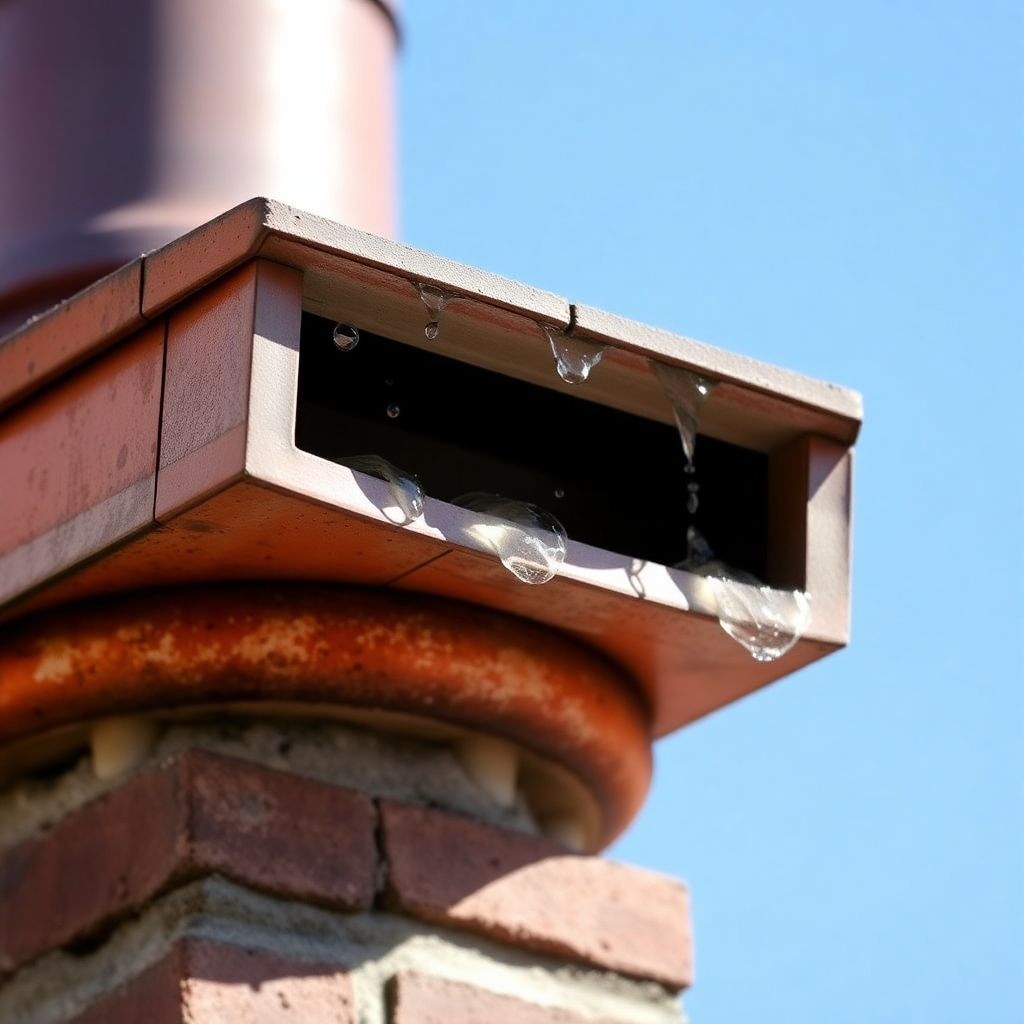
Water is a chimney’s worst enemy, no joke. It can cause all sorts of problems, from structural damage to nasty smells. Keeping water out is a big part of keeping your chimney in good shape. I’ve seen firsthand what happens when water gets in, and it’s not pretty. Let’s talk about how to prevent that.
Importance of a Chimney Cap
Okay, so, a chimney cap is like an umbrella for your chimney. It’s the first line of defense against rain, snow, and even animals. Seriously, without one, you’re basically inviting trouble. I remember this one time, a bird built a nest in my neighbor’s chimney because they didn’t have a cap. It was a whole thing. Anyway, get a cap. Here’s why they’re great:
-
Keeps out rain and snow
-
Prevents animals from nesting
-
Stops debris from falling in
Identifying Water Intrusion
Spotting water damage early can save you a ton of money and stress. Look for these signs:
-
Water stains on the ceiling around the chimney
-
Dampness or moisture inside the firebox
-
Spalling bricks (bricks that are crumbling or flaking)
-
A musty smell
If you see any of these, it’s time to investigate. Don’t ignore it, or it’ll just get worse. Trust me on this one.
Mitigating Moisture Issues
So, you’ve found some water damage. Now what? Here are a few things you can do:
-
Install or replace your chimney cap: Obvious, but important. Make sure it fits properly. I had to get mine custom-made because my chimney is an odd size.
-
Seal any cracks in the chimney: Use a good quality sealant made for masonry. I recommend doing this on a dry day.
-
Ensure proper drainage: Make sure the area around your chimney is graded so water flows away from the foundation. I had to regrade part of my yard last year, and it made a huge difference.
Water damage can lead to serious structural problems if left unchecked. Addressing moisture issues promptly is key to maintaining a safe and efficient chimney. Regular inspections and preventative measures can save you from costly repairs down the road.
Ensuring Proper Ventilation
Checking for Obstructions
Okay, so picture this: you’re all set to light a cozy fire, but smoke starts billowing back into the room. Not good, right? One of the first things to check is whether anything is blocking the flue. Nests, debris, or even just a buildup of creosote can seriously mess with the airflow. I had a friend who found a whole bird’s nest in his chimney – talk about a fire hazard! Make sure to visually inspect the flue, and if you can’t see all the way up, consider using a mirror or calling in a pro.
Impact of Poor Ventilation
Poor ventilation in your chimney isn’t just about smoke backing up into your living room; it’s a safety issue. When your chimney can’t vent properly, dangerous gases like carbon monoxide can build up inside your home. Carbon monoxide is odorless and colorless, making it super dangerous. It can cause headaches, dizziness, and even be fatal. Plus, if the flue isn’t venting correctly, it can lead to a buildup of creosote, which increases the risk of chimney fires.
Signs of Ventilation Issues
How do you know if your chimney’s not ventilating like it should? Here are a few things to watch out for:
-
Smoke coming back into the house when you have a fire going.
-
A persistent smoky smell, even when the fireplace isn’t in use.
-
Slow-starting fires that struggle to get going.
-
A build-up of soot or creosote inside the fireplace or on the chimney walls.
If you notice any of these signs, it’s time to take action. Don’t just ignore it and hope it goes away. Get your chimney inspected and cleaned by a professional. It’s better to be safe than sorry when it comes to your family’s health and safety.
Here’s a quick guide on what to look for:
|
Sign
|
Possible Cause
|
|---|---|
|
Smoke Backflow
|
Blockage, downdraft, improper flue size
|
|
Smoky Smell
|
Creosote buildup, leaks, poor draft
|
|
Slow-Starting Fires
|
Insufficient airflow, damp wood
|
|
Excessive Soot/Creosote
|
Incomplete combustion, poor ventilation
|
Professional Chimney Flue Maintenance Services
Benefits of Hiring Professionals
Let’s be real, messing with your chimney flue isn’t exactly a walk in the park. That’s where the pros come in. Hiring a professional chimney service offers a bunch of advantages. For starters, they’ve got the experience and specialized tools to get the job done right. They can spot potential problems that you might miss, preventing bigger headaches down the road. Plus, they know all the local codes and regulations, so you can rest easy knowing your chimney is up to snuff.
What to Expect During a Service
So, what happens when you call in the chimney experts? Usually, they’ll start with a thorough inspection of your entire chimney system, from the flue liner to the chimney cap. They’ll look for cracks, blockages, and any signs of damage. Next, they’ll clean the flue to remove creosote and debris. Depending on what they find, they might also recommend repairs or upgrades. Here’s a quick rundown:
-
Inspection of the entire chimney system
-
Cleaning of the flue liner
-
Assessment of any damage or potential issues
-
Recommendations for repairs or upgrades
-
A detailed report of their findings
Choosing the Right Service Provider
Finding the right chimney service can feel overwhelming, but it doesn’t have to be. Start by asking for recommendations from friends or neighbors. Check online reviews and look for companies with a solid reputation. Make sure they’re licensed and insured, and that their technicians are certified. Don’t be afraid to ask questions about their experience, their process, and their pricing. Getting a few quotes can help you find the best value for your money.
Regular chimney maintenance is an investment in your home’s safety and efficiency. By hiring professionals, you’re ensuring that your chimney is in good hands, protecting your family from potential hazards, and extending the life of your chimney system.
Seasonal Maintenance Tips
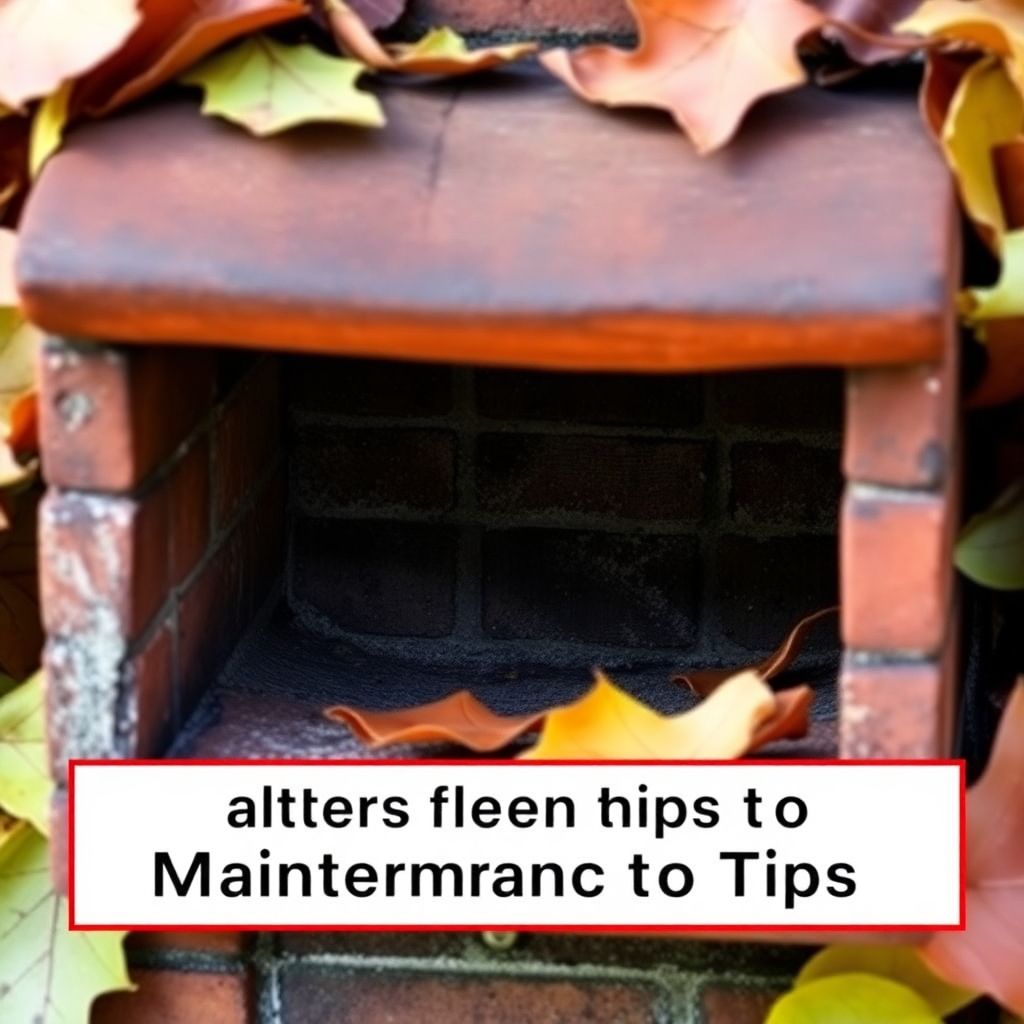
Preparing for Winter Use
Before the cold weather hits, it’s smart to get your chimney ready. This means a thorough inspection and cleaning to remove any creosote or debris that may have built up over the spring and summer months.
-
Schedule a professional chimney sweep.
-
Check the chimney cap for damage and proper fit.
-
Ensure the damper is working correctly.
It’s easy to forget about chimney maintenance during the warmer months, but taking care of it before winter ensures safe and efficient operation when you need it most. A little preparation goes a long way in preventing potential hazards.
Spring Cleaning Checklist
Spring is a great time for a more in-depth chimney checkup. After a winter of heavy use, your chimney might need some extra attention.
-
Inspect the flue liner for cracks or damage.
-
Clean out any remaining ash or debris.
-
Check for water damage and address any leaks.
Year-Round Monitoring Practices
Chimney maintenance isn’t just a once-a-year thing; it’s something you should keep an eye on all the time. Look for warning signs like unusual smells or smoke inside the house.
-
Regularly check for any signs of water leakage.
-
Listen for unusual noises coming from the chimney.
-
Schedule professional inspections every year, regardless of use.
Local Regulations and Compliance
Understanding Local Codes
Okay, so you’ve been keeping up with your chimney maintenance, which is great. But here’s the thing: Uncle Sam, or rather, your local government, probably has something to say about it too. Chimney and fireplace regulations can vary wildly from town to town, and even neighborhood to neighborhood. You might need to check with your city hall or local building department to get the specifics. These codes often cover things like the type of flue liner you can use, the distance your chimney needs to be from nearby structures, and even how often you need to have it inspected. Ignoring these rules can lead to fines or, worse, make your home insurance null and void. It’s a bit of a pain, but it’s worth knowing what’s what.
Importance of Inspections
Regular inspections are a big deal, and not just because I keep saying so. Many local codes actually require them, usually when you’re selling a house or after a chimney fire. But even if it’s not mandatory, getting your chimney checked out by a certified professional is a smart move. They can spot problems you’d never see yourself, like cracks in the flue liner or creosote buildup. There are different levels of inspection, from a basic visual check to a more in-depth look with cameras. The level you need depends on your situation, but it’s always better to be safe than sorry. Here’s a quick rundown:
-
Level 1: A basic check, good for chimneys that haven’t changed and are working fine.
-
Level 2: More detailed, needed when you sell your house or change your heating system.
-
Level 3: The most thorough, usually done after a chimney fire or other major event.
Insurance Requirements for Homeowners
Speaking of being safe, let’s talk about insurance. Your homeowner’s insurance company cares about your chimney, a lot. They don’t want to pay out a claim for a chimney fire that could have been prevented. Many policies require you to maintain your chimney properly, which includes regular cleaning and inspections. If you don’t, and something goes wrong, they might deny your claim. Keep records of all your chimney maintenance, like receipts for cleaning and inspection reports. It’s also a good idea to talk to your insurance agent about their specific requirements. It’s a boring topic, I know, but it could save you a lot of money and hassle in the long run.
Ignoring local regulations and insurance requirements can lead to serious consequences, including fines, denied insurance claims, and, most importantly, increased risk of fire or carbon monoxide poisoning. Staying informed and compliant is a key part of responsible homeownership.
Long-Term Benefits of Regular Maintenance
Extending the Lifespan of Your Chimney
Regular chimney maintenance isn’t just about immediate safety; it’s an investment in the future of your home. By addressing small issues early, you prevent them from snowballing into major, costly repairs. Think of it like taking your car in for regular oil changes – it keeps everything running smoothly for longer. Ignoring those little things can lead to big problems down the road, and the same goes for your chimney. A well-maintained chimney can last for many years, saving you a ton of money and hassle in the long run.
Improving Home Safety
Chimney safety is a big deal. A neglected chimney can pose serious risks, including chimney fires and carbon monoxide leaks. Regular maintenance helps to minimize these risks, creating a safer living environment for you and your family. It’s about peace of mind, knowing that your chimney is functioning as it should and not posing a threat.
-
Reduces the risk of chimney fires.
-
Prevents carbon monoxide leaks.
-
Ensures proper ventilation.
Keeping up with chimney maintenance is a simple way to protect your home and family. It’s not just about following the rules; it’s about making sure everyone is safe and sound.
Enhancing Energy Efficiency
A clean and well-maintained chimney flue helps your fireplace or stove burn fuel more efficiently. This means you’ll use less fuel to heat your home, saving you money on your energy bills. Plus, it’s better for the environment, as it reduces the amount of pollutants released into the air. It’s a win-win situation – you save money and help protect the planet. Efficiency is key!
|
Benefit
|
Description
|
|---|---|
|
Reduced Fuel Usage
|
A clean flue allows for better airflow, leading to more efficient burning.
|
|
Lower Energy Bills
|
Using less fuel directly translates to lower heating costs.
|
|
Reduced Emissions
|
Efficient burning reduces the release of harmful pollutants.
|
Keeping up with regular maintenance can really pay off in the long run. It helps your home stay in good shape, saves you money on big repairs, and keeps your family safe. Plus, a well-maintained home can even boost its value! Don’t wait until something breaks; start taking care of your home today. Visit our website to learn more about how we can help you with home inspections and maintenance tips!
Wrapping It Up: Keeping Your Chimney Safe and Efficient
So, there you have it. Keeping your chimney flue in good shape is really about staying on top of things. Regular check-ups and cleanings can save you from some serious headaches down the line. You don’t want to deal with a chimney fire or water damage, trust me. Make it a habit to look for signs of wear and tear, like cracks or leaks, and don’t hesitate to call in a pro if you spot something off. It’s all about enjoying your fireplace safely and efficiently. Stick to a maintenance schedule, and you’ll be cozying up by the fire without a worry in the world.
Frequently Asked Questions
What is a chimney flue?
A chimney flue is the part of the chimney that carries smoke and gases from your fireplace or stove outside. It helps keep your home safe by venting harmful gases.
Why is it important to maintain my chimney flue?
Regular maintenance of your chimney flue is important to prevent blockages and damage. This helps avoid dangerous situations like chimney fires and keeps your home safe.
How often should I have my chimney flue cleaned?
You should have your chimney flue cleaned at least once a year. If you use your fireplace often, you might need to clean it more frequently.
What are the signs that my chimney flue needs repairs?
Signs that your chimney flue needs repairs include water leaks, a smell of smoke inside your home, and white residue on the walls of the flue.
Can I clean my chimney flue myself?
While you can do some basic cleaning, it’s best to hire a professional chimney sweep. They have the right tools and experience to clean it safely and effectively.
What is creosote and why is it a problem?
Creosote is a flammable substance that builds up in your chimney flue when wood is burned. If not cleaned, it can cause chimney fires.
How can I prevent water damage to my chimney flue?
You can prevent water damage by installing a chimney cap. This keeps rain out and stops moisture from damaging the flue and the chimney.
What should I do if I notice smoke in my home?
If you notice smoke in your home, it could mean your flue is blocked or damaged. You should stop using your fireplace immediately and call a professional for help.
